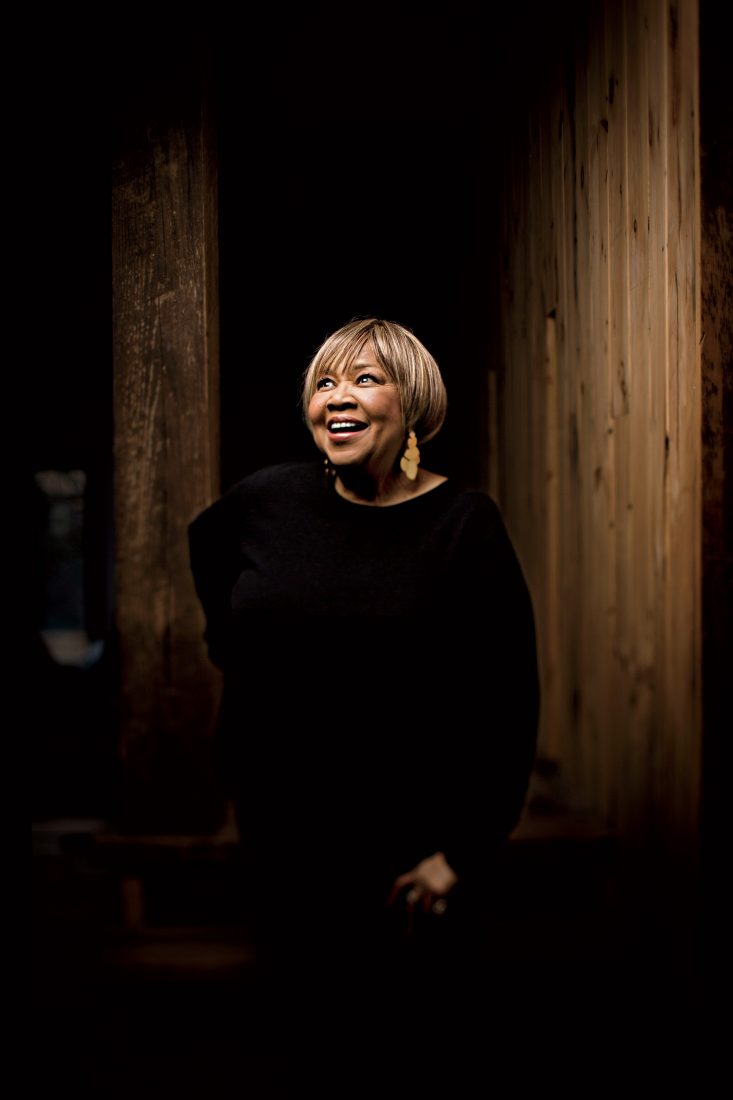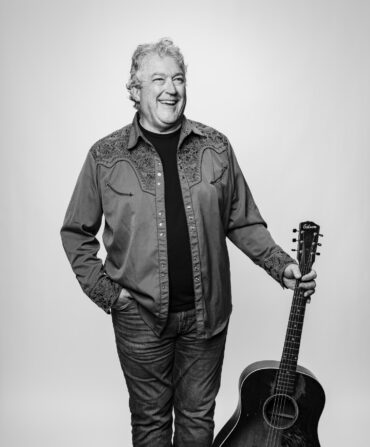These days plenty of singers are channeling the gospel sound, but Mavis Staples was one of the original testifiers. Backed by her family members, the Staple Singers, she got her start lighting up churches and civil rights marches—hers was the signature voice of the movement—with her husky contralto. But Mavis, who is from Chicago and spent part of her youth on her grandparents’ Mississippi farm, has never fit tidily into any musical box. She recorded the first gospel album to sell a million copies (Uncloudy Day) in 1959, crossed over into R&B with a string of 1970s hits such as “I’ll Take You There” and “New Orleans,” and won a Grammy (her first) for her 2010 Americana album with Wilco’s Jeff Tweedy (You Are Not Alone). Now, at seventy-six years old, fresh off a cross-country tour with more dates in January, and a documentary about her life (titled simply Mavis!) set to air on HBO later this winter, the soul legend is proving that her glory days are far from over.
Since the beginning of September, you’ve played Farm Aid, headlined a thirty-two-city tour, and electrified an all-star musical lineup on The Late Show with Stephen Colbert’s debut. How do you have the energy to perform after all these years?
It’s a God-given talent. I get my rest and take care of myself. And I’ve been doing it for so long, it’s just a part of me. I can’t stop.
You got into the music business as a young child. How?
My siblings and I started singing around 1950. At the time, my father [Roebuck “Pops” Staples] was singing with an all-male group, the Trumpet Jubilees. But those guys wouldn’t come to rehearsal. Pops would go and two or three would show up. The third time it happened, he came home disgusted and went straight to the closet where he had a little guitar he had bought at the pawnshop. He called us children into the living room—there were four of us—had us sit in a circle on the floor, and began giving us parts that he and his sisters and brothers would sing growing up in Mississippi. We would rehearse at night after we’d finished our homework. And that was the beginning of the Staple Singers. We sang at churches around Chicago, and a few years later got our first record deal. Then we hit the road.
What was it like performing in the South during the civil rights era?
The South was like our home. Our records were hot there first, before they were hot in the North, and we were traveling down South to sing when I was still in school. My father let us know that everyone might not love us or be friendly. And we knew what to expect anyway because he would often send the two youngest of us to stay with our grandmother in Mound Bayou, Mississippi. We sang in black churches, and then in black schools and auditoriums when the churches got too small. We didn’t start any trouble—though I did inadvertently integrate a washateria one time. The black side was full, so I just went over on the white side. There were two ladies sitting there, and they didn’t say anything to me and I didn’t say anything to them. I just put in my fifteen cents and started washing my clothes. And once the black women saw I was washing my clothes, they all started coming in, too.
Your family became close with Dr. Martin Luther King, Jr. How did you meet him and get involved in the civil rights movement?
We happened to be in Montgomery one Sunday morning and my father wanted to go to Dr. King’s church. Afterward, he told us, “If he can preach it, we can sing it.” Soon, we started singing our freedom songs, like “Freedom Highway” and “Why (Am I Treated So Bad),” before Dr. King spoke at the meetings. He was a great man, and that is a part of my life that I will cherish forever.
Around that time, the Staple Singers also started playing folk festivals, and you’ve been a fixture ever since.
Newport was our first festival, in 1963. Joan Baez, Johnny Cash, Bob Dylan, Buffy Sainte-Marie, they were all there. We didn’t understand why they called us, but we quickly realized that folk is close to gospel. We both sing about beauty and love. I love bluegrass for that reason, too. And I’m fortunate people still ask me to attend the festivals. Some of my friends, like Gladys Knight, never get invited.
Of all the artists you’ve worked with over the years, who was your favorite?
I love everyone I’ve ever sung with: Prince, Curtis Mayfield, Jeff Tweedy, Zac Brown, Bob Dylan. They’re geniuses, and they come for me. I feel like a queen on a throne.
Speaking of Bob Dylan, you famously turned down a marriage proposal from him. How many proposals have you gotten?
I’ve been made to feel really special in my life. Sometimes, the fellas propose right out of the audience. I say, “Sure, honey. There’s plenty of Mavis to go around.”
HBO plans to release Mavis!, a documentary about you, in February. What’s it like seeing your life play out on-screen?
For a long time the Staple Singers didn’t get the recognition we deserved because we sang gospel songs. We weren’t singing like Tina Turner and Aretha Franklin—Mavis wasn’t singing those kind of songs. When Jessica Edwards [the filmmaker] called to tell me that HBO had picked up the documentary, I was just excited for people to see it. Truthfully, in the beginning I didn’t really want to do the film. I had gotten sick of telling people my story. But Jessica convinced me, and I’m so happy I agreed. I’m seventy-six years old, carrying on my family’s tradition. And I’m not tired yet. Mavis is still here.








